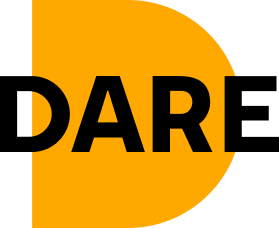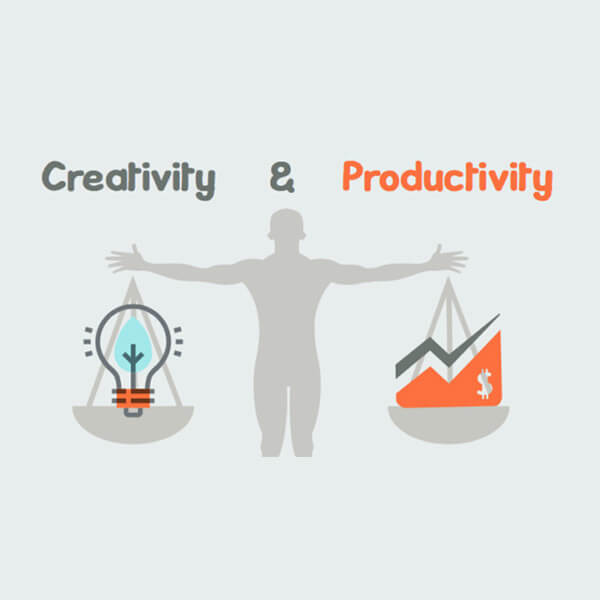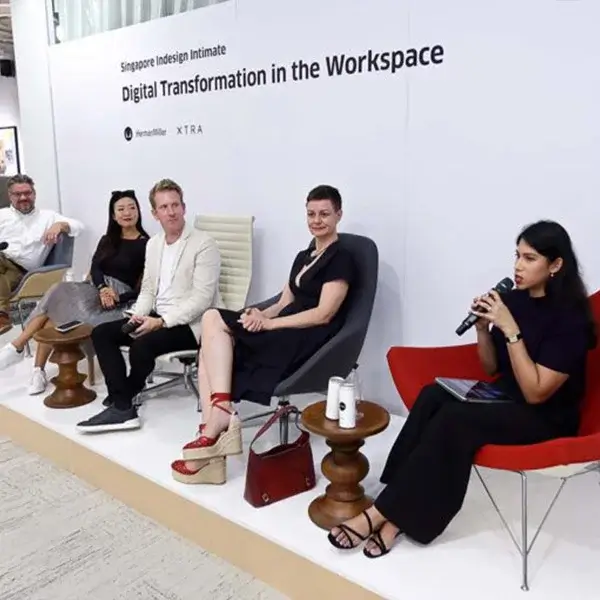I have spent most of my career working in the field of workspace design and for most of that career the major objective for most projects I have worked on one way, or another was to create greater efficiency.
Whether it is greater space efficiency, operational efficiency or even energy/resource efficiency. Efficiency was a 20th Century obsession. At the advent of the Industrial revolution, we got a taste of what could be achieved through increased efficiency, with the introduction of machines, how productivity could be increased to rapidly increase returns on assets. In this era of productivity scarcity our relentless pursuit of productivity improvements was born. It was the holy grail of business, and such a simple equation, put less in get more out, make more profit. It seems a little illogical that you could get more output with less input, but that is what we have spent the 20th century achieving. This has been done through increased efficiency and productivity. We have developed a plethora of means to monitor and measure both efficiency and productivity, which in themselves have come to be seen as the measurement of success.
The first half of the 20th century was a long slow slog to increase productivity. As we developed the tools to measure productivity it became apparent that the effort was paying off, there was a direct correlation between increased productivity and return on assets (profits). In the last 30 years or so we have enjoyed productivity in ever increasing abundance across all industries. One of the most staggering statistics that demonstrates this is that since 1965 across all industries productivity has increased by an aggregate of close to 150%. In industries such as technology and telecoms labour productivity has grown by more than 800%
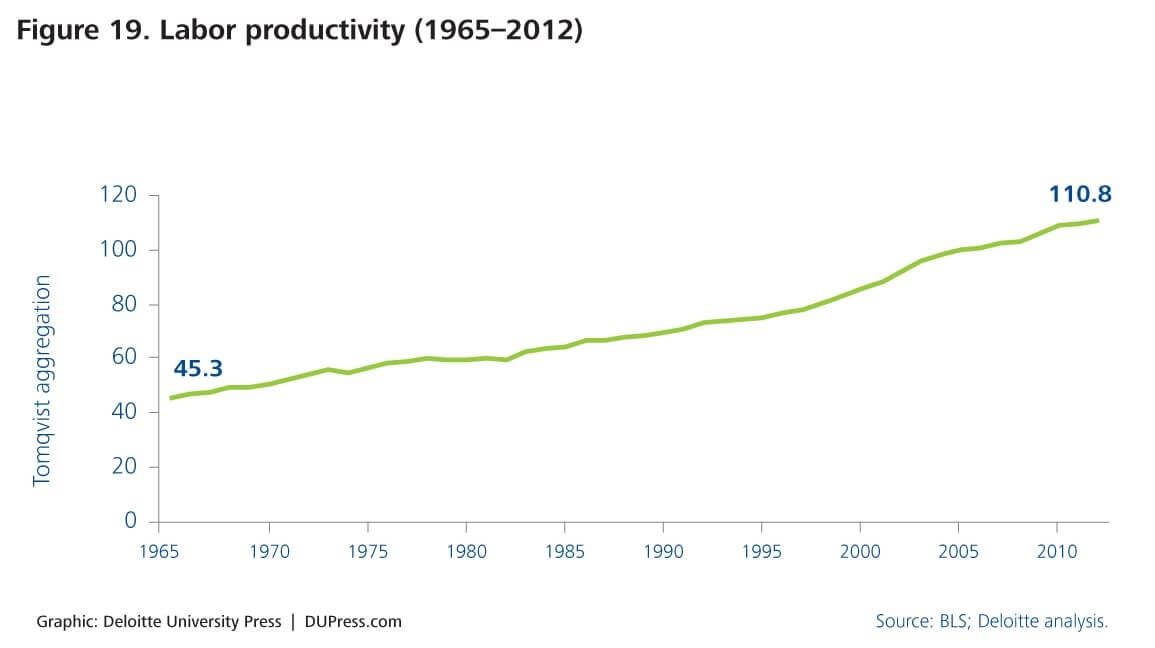
Based on the impact of productivity on profits in the early 20th Century, this rapid growth in productivity and the efficiency that was fueling it should have delivered staggering returns for businesses. However here is the problem, the wheels seem to have come off the equation. It is somehow broken. If we look at the data for the ROA across a similar time frame this is obvious.
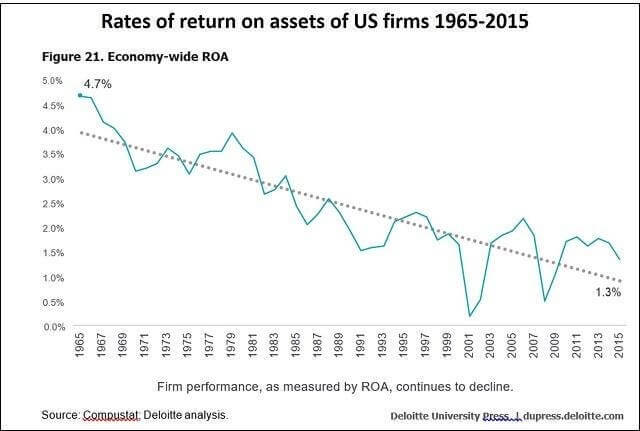
ROA has declined by over 70% in the same timeframe. We really must start to question the relevance of productivity in the modern world of work and business.
Despite this, every piece of research I read in relation to work, the workplace or employee performance focuses on productivity as a measure of success. Unfortunately, it seems that these days productivity is no measure of success.
If improving productivity no longer delivers financial returns for businesses, what does? What should we be assessing to measure performance and improve success? When we look at businesses that are growing and achieving high ROA it starts to become clear that the reason for this is innovation. Just as efficiency drives productivity, creativity drives innovation. We are essentially shifting from the era of productivity to the era of creativity.

Source: https://scottbelsky.medium.com/creativity-is-the-new-productivity-d287d6ad7533
At the beginning of the 20th century, we could see the tangible benefits of increasing productivity, but we didn’t have the tools or ability to adequately measure productivity or quantify its direct impact on returns. By the time productivity became more abundant we had developed many tools, systems, and processes to measure productivity. These are still in widespread use despite the near irrelevance of productivity to business returns. So why are we still obsessed with productivity as a performance indicator from everything from a chair to an employee? I think the answer is that as we are now at the beginning of the era of creativity, it is unfortunately scarce, and we have not managed to devise any tools, systems, or processes to measure creativity and its impact on business performance and returns just yet. The tests that have been developed and the studies that are being undertaken around creativity are also showing some concerning outcomes. Creativity is not just scarce but in decline. I have read studies from The US to Korea which all show the same worrying trend so regardless of geography or culture while the extent may vary the decline of creativity is universal.
So, I find myself asking the question is productivity or at least our obsession with it and efficiency stifling creativity and innovation? If an employee is racing against time to always produce work, knowing that that the outcome of their next review will depend on performance, the metrics of which are bound to include productivity. Do they have any time to sit back and come up with new ideas that will return better results for their team/company? The time has come when we need to review and come up with new ways of measuring performance.
The same can be applied to workplaces, In the era of productive abundance when productivity started to fail to deliver meaningful results there was a relentless drive to make workspaces efficient. Workplace space in Hong Kong, India and China shrunk from 9.3 sqm per desk to 4.6-5.6 in a period of 10 years. I believe that this had a corresponding impact on company returns, because it was to the detriment of humanity, people’s health and wellbeing as well as society and social structure. The pandemic saw a mini revolt against this with most employees showing no great desire to return to their awful workplaces.
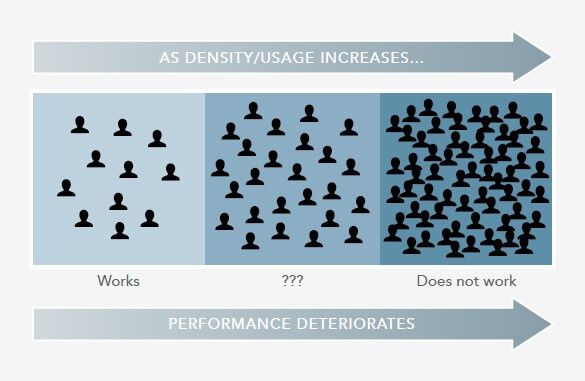
I strongly feel that we need to start taking creativity seriously. We need to start studying how to arrest the decline, how to assess and measure it, how to nurture it and how to create working environments that inspire it.
